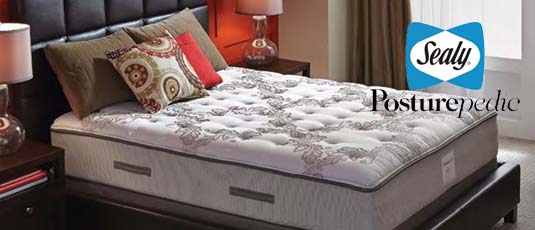Environmental Footprint
Environmental Footprint
We want the world to sleep better. Not to mention a better world to sleep in.
Call it being green. Call it a distinct love for the planet. Either way, we’re proud to manufacture quality mattresses while pursuing practices that reduce our impact on the environment. Read a little more about how Sealy’s helping the planet.

As the world’s largest bedding manufacturer, Sealy Corporation recognizes the importance of environmental sustainability and takes seriously our corporate responsibility for good stewardship in this effort. We provide high-quality, durable sleep sets that provide our customers with the highest levels of comfort and wellness.
Our goal is to reach an acceptable balance between sustainability and product quality, performance and durability, based upon the practical application of the most advanced technologies available. We are currently embarking on a two-fold approach to reduce our environmental footprint:
1. To ensure that our current operations, and the operations of our suppliers, are as environmentally friendly as possible.
2. To search for economically feasible ways to improve the sustainability of our products.
Here are the steps that Sealy has taken to improve the environmental sustainability of our products:
WOOD
Sealy’s lumber resource is certified to SFI (Sustainable Forestry Initiative) and CSA (Canadian Standard Association) standards. This lumber company:
- Supplied 66% of its fuel needs through “green” fuel sources (biomass, e.g., bark and sawdust, as well as landfill gas) in 2008.
- Self-generates 46% of its energy needs (fuel and electricity) using renewable sources (co-generation from biomass and hydroelectricity).
- Reduced greenhouse gas emissions by 31% in intensity (per ton) and 52% total since 2000.
*Relevant Sealy product: box spring (frame)
STEEL
- 100% of the steel products in Sealy sleep sets come from recycled steel.
- Because of our patented design, Sealy innerspring units can be compressed instead of baled, so that more innerspring units fit into a truckload.
- Fewer truckloads provide greater fuel efficiency and reduced emissions.
*Relevant Sealy products: mattress (innerspring), box spring (modules, center rails, grid tops, nails and staples)
FOAMS
- Sealy’s foam supplier recycles 100% of its polyurethane scrap for use in the production of other consumer products (e.g., carpet, padding).
*Relevant Sealy product: mattress (comfort layers)
LEAN MANUFACTURING
Scrap Reduction:
- Sealy has reduced its scrap by 69% from approximately 1.8 lbs per piece produced in June 2004 to approximately .43 lbs per piece produced in December 2009.
- In 2009, Sealy reduced its recycled scrap 3.3% from 2008 and 33% since 2004 (lbs per unit sold).
RECYCLING
- 100% of manufacturing scrap from all Sealy’s plants is taken by a third-party company to be recycled for other products. Scrap includes textiles, foams and plastics.
- Both wood and metal pallets are sent back to Sealy’s plants for re-use.
LOGISTICS
- Sealy uses a route optimization software system that streamlines delivery and minimizes the fuel use of its truck fleet.
- Sealy has consolidated transportation in North America where appropriate.
- Sealy has selected suppliers based on their proximity to Sealy plants.
- Subsequently, Sealy has reduced its carbon dioxide emissions by 23% since 2007.
Non-Essential Materials Reduction
- Sealy has minimized the use of secondary materials that are not critical to bed manufacturing and has developed environmentally preferable options (e.g., reduced corrugated packaging).
FIRE RETARDANT MATERIALS
Sealy chose to use only environmentally friendly fire-retardant materials to meet the new U.S. Code of Federal Standards, Title 16, Part 1633, Standard for the Flammability (Open Flame) on Mattress Sets. By design, Sealy’s fire retardant materials have inherent re-retardant properties. As a result, no chemicals, including halogens or harsh metals, are used in Sealy’s fire-retardant materials.
SECONDARY BEDDING
Sealy has created an entire division to channel excess production to secondary bedding markets. This minimizes the amount of products and materials going to landfills, and includes:
Sleep sets produced from excess raw materials
- Production overruns
- Off-specification sleep sets
- Prototypes and experimental sleep sets


